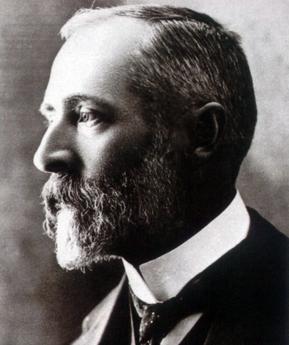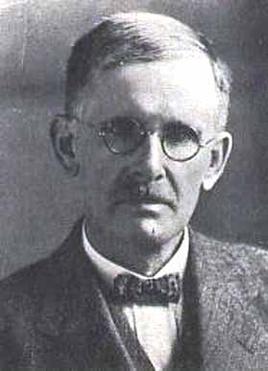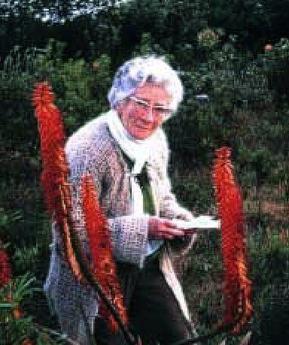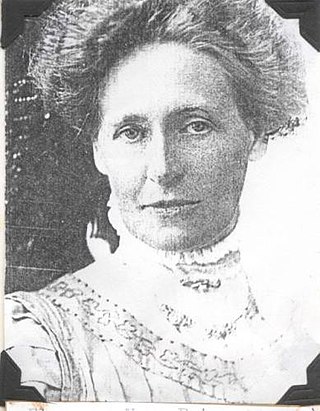Related Research Articles

Harry Bolus was a South African botanist, botanical artist, businessman and philanthropist. He advanced botany in South Africa by establishing bursaries, founding the Bolus Herbarium and bequeathing his library and a large part of his fortune to the South African College. Active in scientific circles, he was a Fellow of the Linnean Society, member and president of the South African Philosophical Society, the SA Medal and Grant by the SA Association for the Advancement of Science and an honorary D.Sc. from the University of the Cape of Good Hope.

Selmar Schonland, originally spelt Schönland, the founder of the Department of Botany at Rhodes University, was a German immigrant, who came to the Eastern part of the Cape Colony in 1889 to take up an appointment as curator of the Albany Museum. He came to Grahamstown via a doctorate at the University of Hamburg and a post at Oxford University. Working under Prof. Sir Isaac Bayley Balfour and Prof. Sydney Howard Vines, he developed an interest in the family Crassulaceae and contributed an account of this group to Engler & Prantl's Natürl. Pflanzenfamilien.

Ernest Edward Galpin (1858–1941), was a botanist and banker born in the Cape Colony. He left some 16,000 sheets to the National Herbarium in Pretoria and was dubbed "the Prince of Collectors" by General Smuts. Galpin discovered half a dozen genera and many hundreds of new species. Numerous species are named after him such as Acacia galpinii, Bauhinia galpinii, Cyrtanthus galpinii, Kleinia galpinii, Kniphofia galpinii, Streptocarpus galpinii and Watsonia galpinii. He is commemorated in the genus Galpinia N.E.Br. as is his farm in the genus Mosdenia Stent.

John Hewitt was a South African zoologist and archaeologist of British origin. He was born in Dronfield, Derbyshire, England, and died in Grahamstown, South Africa. He was the author of several herpetological papers which described new species. He also described new species of spiders and other arachnids.

Margaret Rutherford Bryan Levyns was an eminent South African phytogeographer, botanist and taxonomist.

The Bolus Herbarium was established in 1865 from a donation by Harry Bolus of his extensive herbarium and library to the South African College, which later became the University of Cape Town.

Amy Frances May Gordon Jacot Guillarmod, was a South African botanist and limnologist, noted for her work on the flora of Basutoland and some 200 publications, including numerous papers on wetlands, bogs and sponges.

Harriet Margaret Louisa BolusnéeKensit was a South African botanist and taxonomist, and the longtime curator of the Bolus Herbarium, from 1903. Bolus also has the legacy of authoring more land plant species than any other female scientist, in total naming 1,494 species.

Miriam Phoebe de Vos was a leading South African botanist and academic. She was an expert on bulbous plants, especially Romulea. She also had a special interest in Moraea and Clivia.

Elsie Elizabeth Esterhuysen was a South African botanist. She was described as "the most outstanding collector ever of South African flora", amassing 36,000 herbarium specimens.

Sir George Edward Cory, was an English-born South African chemist and historian, best known for his six-volume publication "The Rise of South Africa".

William Stanger was best known as a surveyor-general in the Cape Colony and the Colony of Natal, but was also a geologist, botanist and medical doctor. He was the son of Willam Stanger and Mary Dent. He studied medicine and natural science at Edinburgh University, and after returning from a trip to Australia and New Zealand, ran a practice in London for some time.
Frances Margaret Leighton was a South African botanist and educator. After graduating from Rhodes University with her M.Sc degree in 1931, she worked at the Bolus Herbarium until 1947. Her primary research interests were focused on monocots, and her work impacted the Ornithogalum and Agapanthus.

Augusta Vera Duthie was a South African botanist who studied the plants of the Western Cape and was a popular teacher who lectured on cryptogamic botany. She was the first university lecturer in botany who was entirely educated in South Africa. The standard author abbreviation A.V.Duthie is used to indicate this person as the author when citing a botanical name.
Mary Agard Pocock was a South African phycologist.
Arthur Matthews was a founding professor at Rhodes University in Grahamstown, South Africa.
Henry George Flanagan was a Cape Colony-born plant collector, traveller, botanist and farmer. He developed a renowned garden for native South African trees and rare exotic plants. A rare endemic of Eastern Cape, Greyia flanaganii is one of several plants named in his honour.

Florence Mary Paterson, née Hallack, also known as Mrs. T.V. Paterson, was a South African plant collector. Her specimens are kept in the herbarium of Albany Museum and the Bolus Herbarium of the University of Cape Town. She is honored in the plant name patersoniae and genus name Neopatersonia.
Mayda Doris Henderson was a South African botanist, phytogeographer, and taxonomist. She studied at Rhodes University and was best known for her articles published in Kirkia; The Zimbabwe Journal of Botany. She was the recipient of a Southern Africa Medal.

Reino Pottnée Leendertz was a Dutch-born South African botanist and chemist. She was the first woman to be appointed as a botanist in the civil service of the South African Republic, and greatly expanded the plant collection of the Transvaal Museum. She later co-authored a list of over 3,000 species of flowering plants and ferns with Joseph Burtt Davy in 1912, expanding it to over 4,000 in 1920.
References
- ↑ "Britten, Lillian Louisa (1886-1952)". Global Plants. JSTOR. Retrieved 17 September 2018.
- ↑ "Britten, Lillian Louisa on JSTOR" . Retrieved 17 September 2018.
{{cite journal}}: Cite journal requires|journal=(help) - ↑ "Britten, Miss Lilian Louisa (botany)". www.s2a3.org.za. S2A3 Biographical Database of Southern African Science. Retrieved 17 September 2018.
Britten had an excellent knowledge of the flora of the Eastern Cape and was an avid collector, with over 7000 specimens to her credit.
- ↑ Ogilvie, Marilyn; Harvey, Joy (2003). The Biographical Dictionary of Women in Science: Pioneering Lives From Ancient Times to the Mid-20th Century. Routledge. pp. 180–181. ISBN 9781135963439 . Retrieved 17 September 2018.
She collected extensively and her plant collections are in a number of museums in South Africa, but she published little. She was highly knowledgeable about Eastern Cape flora.
- ↑ E. Figueiredo; G.F. Smith (31 December 2021). "Women in the first three centuries of formal botany in southern Africa". Blumea . 66 (3): 275–307. doi:10.3767/BLUMEA.2021.66.03.10. ISSN 0006-5196. Wikidata Q112627895.
- ↑ International Plant Names Index. L.L.Britten.